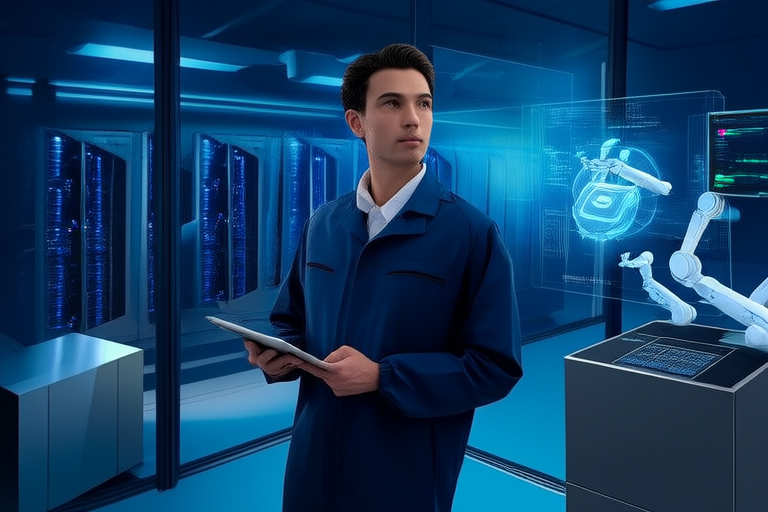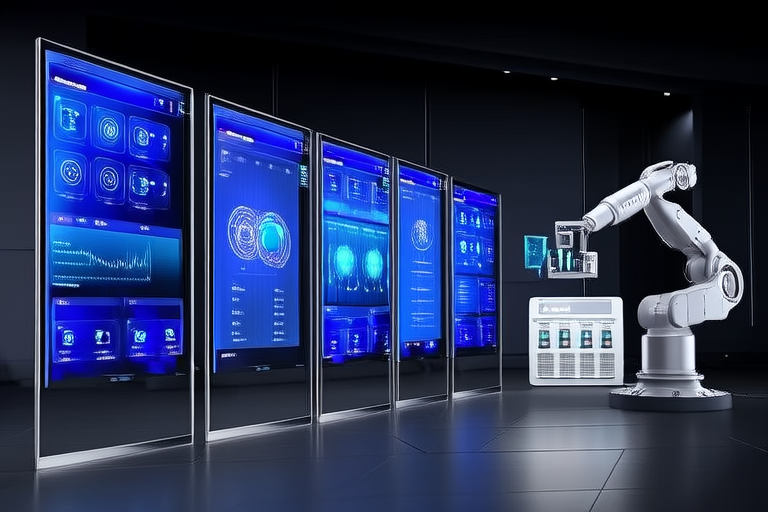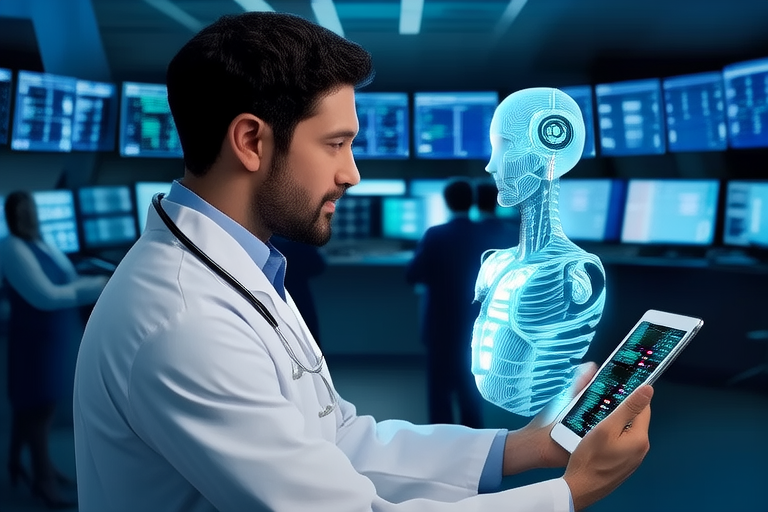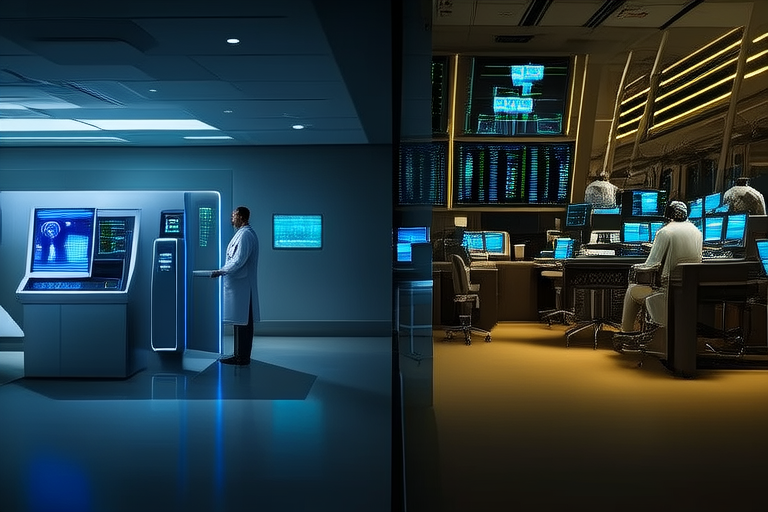The Future is Now: Pioneering Uses of AI in Today’s Leading Industries
Introduction
Artificial Intelligence (AI) has rapidly evolved from a theoretical concept to a powerful tool driving innovation across numerous industries. Once confined to science fiction, AI is now an integral part of our daily lives, transforming the way businesses operate and interact with customers. The theme “The Future is Now” aptly captures the essence of this transformation, as AI is not just a future possibility but a present reality.
From healthcare to transportation, AI is revolutionizing traditional practices and introducing new efficiencies. This article explores the current and emerging applications of AI across various industries, highlighting how it is already being applied in real-world scenarios.
Section 1: Healthcare
In the healthcare industry, AI is playing a pivotal role in diagnostics, personalized medicine, and patient care. AI-driven tools and systems are enhancing the accuracy and speed of medical diagnoses, enabling earlier interventions and better patient outcomes.
- Diagnostics: AI algorithms can analyze medical images, such as X-rays and MRIs, with greater precision than human radiologists, reducing the likelihood of errors.
- Personalized Medicine: By analyzing vast amounts of patient data, AI helps tailor treatments to individual needs, improving efficacy and reducing side effects.
- Patient Care: AI-powered chatbots and virtual assistants provide 24/7 support, answering common health queries and assisting patients in managing their conditions.
Significant advancements have been made in AI-assisted surgeries, where robots guided by AI algorithms perform intricate procedures with unparalleled precision. These developments are not only improving patient outcomes but also reducing recovery times and costs.
Section 2: Finance
The financial sector has embraced AI to enhance fraud detection, algorithmic trading, and risk management. AI’s ability to process and analyze large datasets in real-time makes it invaluable for identifying fraudulent activities and optimizing investment strategies.
- Fraud Detection: AI models can detect unusual patterns in transactions, flagging potentially fraudulent activities before they cause significant damage.
- Algorithmic Trading: High-frequency trading algorithms powered by AI execute trades at optimal times, maximizing returns and minimizing risks.
- Risk Management: AI systems analyze market trends and historical data to predict potential risks, helping financial institutions make informed decisions.
Companies like JPMorgan Chase and Goldman Sachs have integrated AI into their operations, streamlining processes and improving customer experiences. These advancements not only increase efficiency but also reduce operational costs.
Section 3: Manufacturing
In the manufacturing sector, AI is enhancing production efficiency, predictive maintenance, and quality control. By automating routine tasks and optimizing workflows, AI enables manufacturers to produce goods faster and more cost-effectively.
- Production Efficiency: AI-driven robotics and automation systems streamline assembly lines, reducing downtime and increasing output.
- Predictive Maintenance: Sensors and AI algorithms monitor equipment performance, predicting when maintenance is needed to prevent costly breakdowns.
- Quality Control: AI systems inspect products for defects in real-time, ensuring only high-quality items reach consumers.
Notable implementations include the use of AI in automotive manufacturing, where robots assemble components with precision and efficiency. These advancements are helping manufacturers stay competitive in a global market.
Section 4: Retail
The retail industry is leveraging AI to enhance customer experience, inventory management, and supply chain optimization. AI-powered personalization and recommendation engines are revolutionizing how retailers engage with customers, providing tailored shopping experiences.
- Customer Experience: AI-driven chatbots assist customers with inquiries, offering product recommendations and resolving issues promptly.
- Inventory Management: AI systems track sales data and adjust inventory levels accordingly, preventing stockouts and overstock situations.
- Supply Chain Optimization: AI algorithms optimize logistics and distribution, ensuring timely delivery of products to stores and customers.
Companies like Amazon and Alibaba have successfully implemented AI to improve customer satisfaction and operational efficiency. These advancements are driving growth and innovation in the retail sector.
Section 5: Transportation
The transportation industry is witnessing a paradigm shift with the advent of autonomous vehicles, smart traffic management, and logistics optimization using AI. These technologies promise to enhance safety, reduce congestion, and improve overall efficiency.
- Autonomous Vehicles: Self-driving cars and trucks are being tested and deployed, promising safer and more efficient transportation.
- Smart Traffic Management: AI systems analyze traffic patterns and adjust signals in real-time, reducing congestion and improving flow.
- Logistics Optimization: AI algorithms optimize routes and schedules, reducing fuel consumption and delivery times.
Key players like Tesla, Waymo, and Uber are at the forefront of these innovations, pushing the boundaries of what is possible in transportation. These advancements are set to transform the industry and improve the lives of millions.
Conclusion
The transformative power of AI across industries is undeniable. From healthcare to transportation, AI is revolutionizing traditional practices and introducing new efficiencies. As we look to the future, the possibilities are endless, but so are the challenges. Ensuring ethical use, addressing privacy concerns, and fostering collaboration between humans and machines will be crucial.
This article has explored the current and emerging applications of AI, highlighting how it is already being applied in real-world scenarios. As AI continues to evolve, it will undoubtedly play an even more significant role in shaping the future. We encourage readers to consider the implications of these advancements and how they can contribute to a better world.




